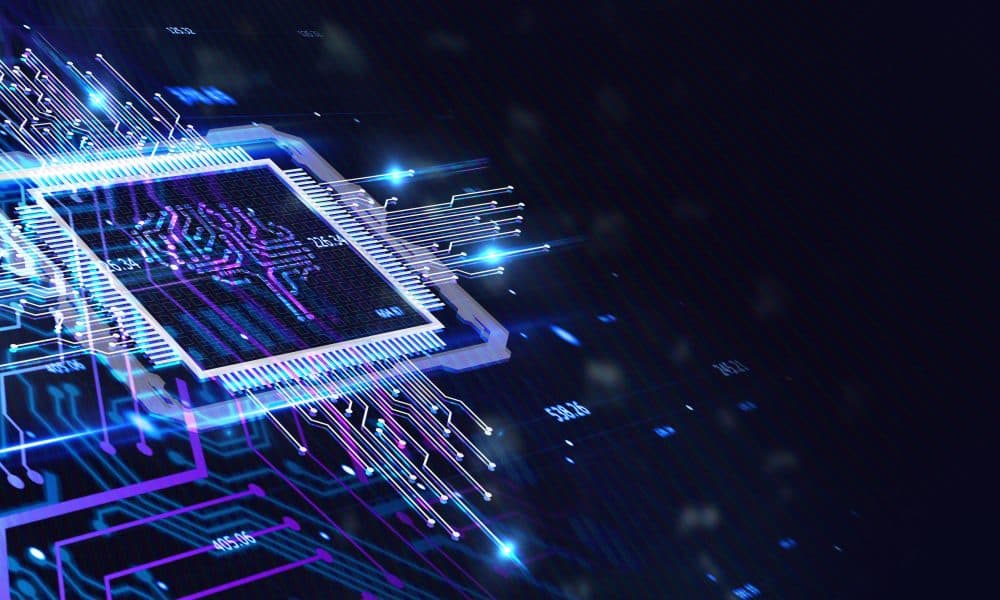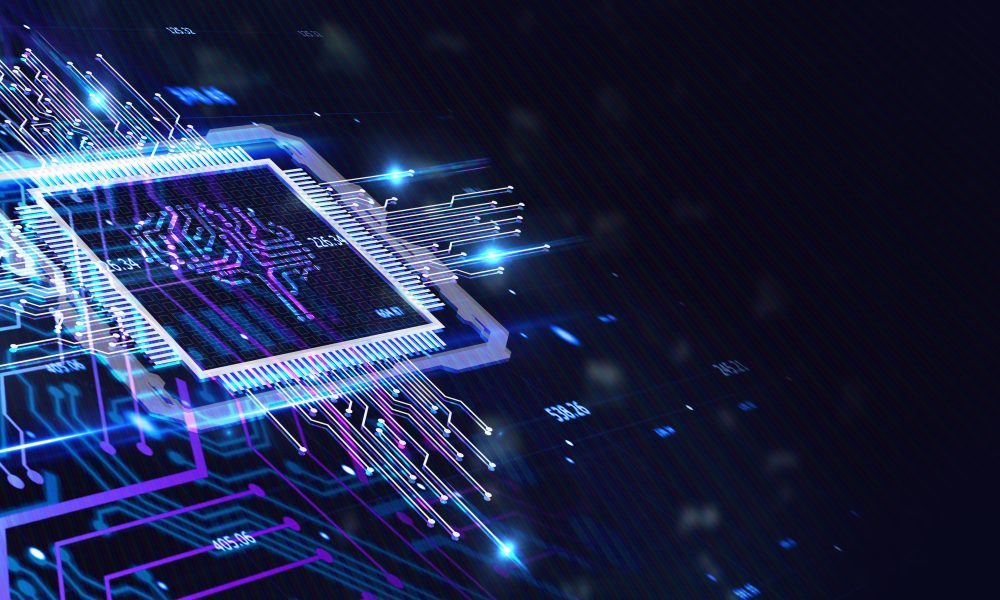
A global registry tracking the flow of chips destined for AI supercomputers is one of the policy options highlighted by a major new report calling for regulation of ‘compute’ – the hardware that underpins all AI – to help prevent AI misuse and disasters.
Other technical proposals presented by the report include ‘compute caps’ – built-in limits to the number of chips each AI chip can connect with – and distributing a “start switch” for AI training across multiple parties to allow for a digital veto of risky AI before it feeds on data.
Experts argue that AI chips and datacentres offer more effective targets for scrutiny and AI safety governance, as these assets have to be physically possessed, whereas the other elements of the AI triad; – data and algorithms – can, in theory, be endlessly duplicated and disseminated.
The researchers point out that powerful computing chips required to drive generative AI models are constructed via highly concentrated supply chains, dominated by just a handful of companies – making the hardware itself a strong intervention point for risk-reducing AI policies.
The report is authored by nineteen experts and co-led by three University of Cambridge institutes – the Leverhulme Centre for the Future of Intelligence (LCFI), the Centre for the Study of Existential Risk (CSER) and the Bennett Institute for Public Policy – along with OpenAI and the Centre for the Governance of AI.
Haydn Belfield is a co-lead author of the report from Cambridge’s LCFI.
He said: “Artificial intelligence has made startling progress in the last decade, much of which has been enabled by the sharp increase in computing power applied to training algorithms.
“Governments are rightly concerned about the potential consequences of AI, and looking at how to regulate the technology, but data and algorithms are intangible and difficult to control.”
The computing power behind artificial intelligence has grown exponentially since the deep learning era kicked off in earnest, with the amount of compute used to train the largest AI models doubling around every six months since 2010.
The biggest AI models now use 350 million times more compute than in 2010.
Government efforts across the world over the past year have begun to focus on compute when considering AI governance.
Outside of China, the cloud compute market is dominated by three ‘hyperscalers’: Amazon, Microsoft and Google.
Co-author Prof Diane Coyle from Cambridge’s Bennett Institute said: “Monitoring the hardware would greatly help competition authorities in keeping in check the market power of the biggest tech companies, and so opening the space for more innovation and new entrants.”
The report provides sketches of possible directions for compute governance, highlighting the analogy between AI training and uranium enrichment.
Belfield said: “International regulation of nuclear supplies focuses on a vital input that has to go through a lengthy, difficult and expensive process.
“A focus on compute would allow AI regulation to do the same.”
Policy ideas are divided into three camps: increasing the global visibility of AI computing, allocating compute resources for the greatest benefit to society, enforcing restrictions on computing power.
For example, a regularly-audited international AI chip registry requiring chip producers, sellers and resellers to report all transfers would provide precise information on the amount of compute possessed by nations and corporations at any one time.
The report even suggests that a unique identifier could be added to each chip to prevent industrial espionage and “chip smuggling”.
Belfield said: “Governments already track many economic transactions, so it makes sense to increase monitoring of a commodity as rare and powerful as an advanced AI chip.”
However, the researchers point out that such approaches could lead to a black market in untraceable “ghost chips”.
Other suggestions to increase visibility and accountability include reporting of large-scale AI training by cloud computing providers, and privacy-preserving workload monitoring to help prevent an arms race if massive compute investments are made without sufficient transparency.
These might include physical limits on chip-to-chip networking, or cryptographic technology that allows for remote disabling of AI chips in certain extreme circumstances.
One suggested approach would require the consent of multiple parties to unlock AI compute for particularly risky training runs – a mechanism familiar from nuclear weapons.
AI risk mitigation policies might see compute prioritised for research most likely to benefit society, such as green energy and health and education.
This could even take the form of major international AI ‘megaprojects’ that tackle global issues by pooling compute resources.
Belfield said: “Trying to govern AI models as they are deployed could prove futile, like chasing shadows.
“Those seeking to establish AI regulation should look upstream to compute, the source of the power driving the AI revolution.
“If compute remains ungoverned it poses severe risks to society.”



